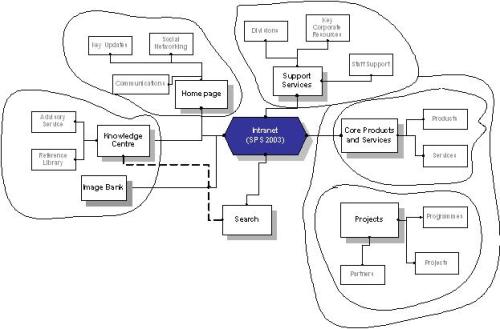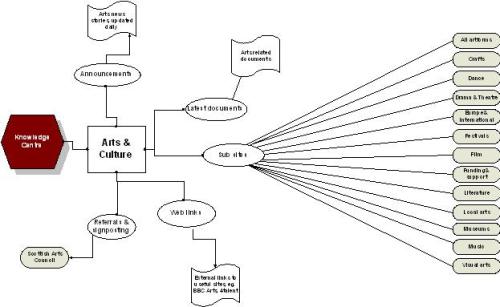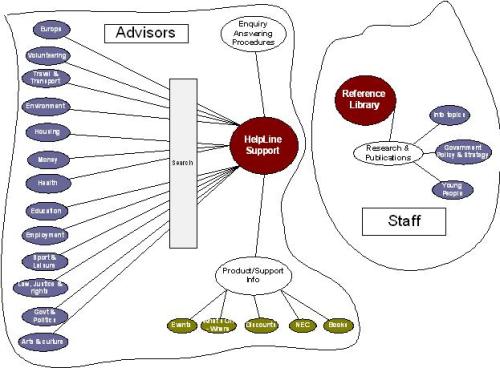
To plant is but a part of landscape composition; to co-ordinate is all.
Christopher Tunnard (1910-1979)
My youngest sister is a freelance landscape architect in London, and so I know a little about this area.
As such, I have heard of Christopher Tunnard, a Canadian-born architect and academic, who in the early part of his career practised as a landscape architect. In 1938 he published Gardens in the Modern Landscape which married the influential modernist ideas then current within architecture with the discipline of landscaping.
Working in Britain at the time, the effect of Tunnard’s writings were short lived in Europe as the coming of the Second World War fostered a move towards more socially responsible design. Yet in 1939 he moved to Harvard where his theories later became the catalyst for what can be termed as the Anglo-American modernist movement in landscape architecture.
And in viewing a garden in the United States that showed his ideas in practice – sadly, the only surviving example of his landscaping work in America – I was struck by how similar planning in landscape architecture is to the visual processes that we employ within web development.

Tunnard's Garden: design plan
Site Mapping and Concept Modelling for Information Architecture
While anyone working in web development knows about the composition, usage and value of site maps, by contrast the related use of concept modelling is a relatively new and unexplored discipline (as applied to IA).
Basically, concept modelling is about conceiving and presenting an abstract representation of the informational ideas and their relationships found at any level within a site. [1]
As Dan Brown in his excellent book, Communicating Design (Peachpit Press, 2007), explains: concept models illustrate how different ideas relate to one another, representing the building blocks of the idea as nodes and their relationships as lines between them.
The diagram below from the book shows a concept model for a website selling musical instruments.

© Dan Brown, Communicating Design (2007)
As Brown says:
While this concept model doesn’t show any more of less detail than the others, it does deal with a specific concept. Instead of representing a broad view of the website, it shows all the different kinds of data on the site and how they relate to each other. This concept model illustrates the different ways of categorizing an instrument (the categories of categories) and associated metadata for each instrument. This concept model represents the relative importance of each concept by varying the size of the circles.
And the principal value of such concept models lies in their flexibility as a planning tool to tease out the underlying relationships between nodes.
Essentially they enable people to visualise (and then discuss) the multiple and complex relationships found between users, nodes (as areas, content types, and metadata, etc.) and the contextual links found in a complex system.
Thus, they can be used in formulating an approach to designing a site structure, and should be used early within an information architecture process.
By contrast, a site map is more focused on defining the eventual structure of the information found in a website, and illustrate a part-whole relationship where an item lower in the map belongs to a higher level item.
And although they can be very different in presentation the traditional site map often looks very much like an org chart: a system of boxes representing pages, connected by lines representing links with their placement and linkages representing the hierarchy.

© Dan Brown, Communicating Design (2007)
Thus, a site map more often tends to the presentation of the end result of an information architecture (often expressed as a single A4 page in a hierarchy represented by uniform squares and links in tiered structure).
By contrast, concept models offer a flexible and dynamic approach to site map planning and may be used as a tool to assist in the construction of an information architecture, which will probably be turned into a site map for the final solution design.
Therefore, in effect, site maps represent the visual specification of a site, and are often used as part of a solution design document. While concepts maps are a tool that assist in the generation of such an information architecture specification.
Visual Mapping in Practice
Just recently at Storm we have started to use concept modelling in our own SharePoint projects.
Their value is of especial importance when one is having to consider the migration and re-design of an existing site structure in an attempt to improve the user journey.
Now this sort of “migration” scenario is a very common one in a SharePoint Intranet project, where an organisation might be considering one of two possible solution paths:
- Version migration: A site migration from one version of SharePoint to another; or
- Improving site structure within the same version: Examining and then improving a site structure – possibly badly conceived in the first place – within the same SharePoint version.
At Storm we are working on two such projects at the moment.
And the one that I have chosen to demonstrate the application of concept mapping is one that deals with version migration.
The project setting is a Scottish public body that has a large number of external stakeholders, for whom we are working on migrating (and improving) the design of an existing SharePoint Intranet while simultaneously planning the migration from SPS 2003 to SharePoint 2010.
Here the aim is to transition from a “file share” SharePoint approach that was adopted in SPS 2003 to delivering a higher-level Communications & Information Portal in SharePoint 2010, while simultaneously looking to use the features of 2010 to support and enhance the overall functions of the site.
As such, we are taking a large and relatively chaotic information domain (where all staff members may contribute) and seeking both to rationalise and re-organise it so that it becomes a more centralised and managed tool for information management for the organisation in question.
Project Process
Following James Robertson’s Enterprise IA methodology we started the design process for this particular project through generating an Intranet Development Roadmap (note: a 2 page word document – nothing more) and conducting Needs Analysis via a user survey (based on the Intranet Review Toolkit).
The objectives for the Intranet concept that emerged were presented as follows:

Next Steps
With a clear and manageable objective in place and some early needs analysis of features to support, we are currently in the process of identifying user tasks/goals and starting an initial IA review.
And because there is already a SharePoint Intranet in existence, our early IA review is focused on the mapping this existing site (both structure and content), and generating an understanding of current logic behind the information organisation (with a view to revising this treatment).
For this we are using both site mapping and concept modelling (see high-level examples below).
Site Mapping
A site map of the top-level site structure for the existing Intranet reveals a fairly large information structure:

Intranet - Site Map
Concept Model
By contrast, the early concept model reveals something of the relationships we must explore further:

Intranet - Concept Model
Well, what’s the outcome so far?
What is interesting is that by using this approach within the project team – rather than merely an interview-based methodology – we are beginning to understand how a potential IA restructuring might be of value across the Intranet.
Take, for example, the Corporate Reference Library – which for the purposes of this study we will call the “Knowledge Centre”. [2]
As currently conceived, this Intranet area is intended as a central informational repository for all staff to access key documents and external resources.
As such, it has two main internal user audiences:
- Staff Members in general
- “HelpLine” Advisors: These represent a sub-section of staff who are dedicated to providing an advisory service to the organisation key external users (i.e. young adults).
As originally conceived, the Knowledge Centre was focused on catering for both user groups, aiming to deploy both key organisational documents and links to external key policy and informational resources organised by a generic sub-site hierarchy of “Subject Focus”.
See, for example, the sub-site structure for “Arts & Culture” below (which has the generic sub-site structural treatment presented below):

Knowledge Centre - Arts & Culture Site Map
However, it appears from our initial reviews that there are a number of issues with the Knowledge Centre in its current treatment:
- It is trying to cater for two user groups – who have different goals and tasks. In supporting two user groups is actually trying to support two functions in one place: (a) a centralised informational resource for all staff and (b) a helpline resource for information advisors. As such, it does neither well.
- The role of the Centre within the Intranet is not clearly defined. As such, because all staff may contribute to the Intranet, the Knowledge Centre is not the only place where staff may add relevant information resources within the site. Other high-level areas such as Projects, Support Services and Products and Services also contain key information resources of a topical nature.
- The Centre does not support a poly hierarchical view of content. The Knowledge Centre’s current sub-site structure means that a document that has content relevant to a number of Subject Topics appears in only one Subject Focus in the hierarchy. And without content tagging by Subject Focus and access to a scoped search at the Knowledge Centre-level this results in staff not finding relevant content unless they already know it exists and where it resides in the sub-site hierarchy.
- The “HelpLine Advisory Service” is not well catered for in the existing treatment. In fact, it appears that the Advisory Service’s information resources are scattered in a number of places throughout the existing Intranet site (e.g. Support Services > Enquiry Answering; Knowledge Centre > All Subject Topics; Projects > Information Advisory Service; Products & Services > Various.).
- Key Content Types are not defined for users. Again in relation to the HelpLine Advisory Service, specialist content types such as Factsheets on subject areas are not immediately visible to Advisors and instead are scattered across a fairly large “Subject” sub-site structure. As such, given the nature of their job, Advisors find it difficult to trace relevant information quickly and rapidly whilst on the phone, and instead resort to individualised information strategies to answer enquiries.
Early Conclusions
It appears from our initial mapping work – to be confirmed by actually interviewing the HelpLine Advisors – is that there is a distinct case to separate out the current treatment of the Knowledge Centre into two new and separate high-level site areas for the Intranet:
- A HelpLine Advisory Service for Advisors
- A Corporate Reference Library for Staff
As such, this treatment has been presented in an early concept model as follows:

HelpLine & Reference Library - Concept Map
And while we have not yet discussed:
- The Content Types needed to support the (a) HelpLine Advisory Service and (b) the Reference Library areas; and
- The logical organisation and structuring of each area – whether by sub-site structure and/or by metadata and scoped search.
Nevertheless, we have gained an important understanding at an early stage of what is deemed a key support area for the organisation through the use of visual mapping of an existing Intranet structure.
And Finally ….
I think there is much to be gained by adopting a visual mapping approach to the design of SharePoint sites; especially so with Intranets – which can be very large information structures that, by definition, often present complex information architectures to their users.
As is the nature of an Intranet solution, very often such a site goes through a series of site architecture revisions as it evolves in relation to the organisation in question. And arguably this applies as much to a SharePoint Intranet as any other solution; perhaps more so, because early information architectures for SharePoint have, more often than not, been badly conceived simply because the world over we are learning “best practices” with this product as we go.
In addition, the task of site migration from one SharePoint version to another is a key issue facing organisations in the decision to upgrade. As such, it is rare that an organisation will not want to take the chance to review its current SharePoint site treatment in an effort to improve information management support for its staff.
And clearly while information architecture is only one consideration in site migration within SharePoint, it is nevertheless a critical one and as a result we need to improve our conceptualisation of such architectures and our project approach to conducting this task.
I think that adopting a visual mapping approach to information architecture is of great value in SharePoint solution design. And, in particular, concept modelling is an important means whereby we can qualify and discuss our understanding of Intranet site maps within project teams in such a way that it improves our overall approach to information architecture.
Alongside more traditional tools such as Site Maps and Content Inventories it is yet another tool to assist in our ambition to design improved Intranets for our users.
[1] In Communicating Design Dan Brown summarises Concept Models as follows:

[2] Note: in the interest of preserving client confidentiality, the references in this Case Study have been deliberately anonymised throughout this post.